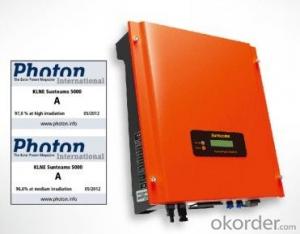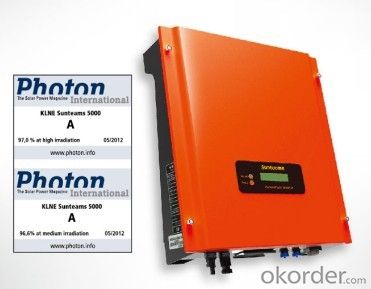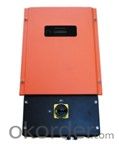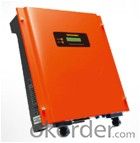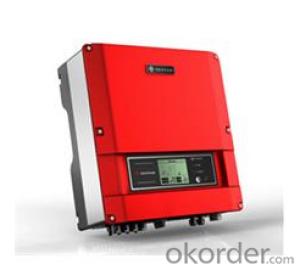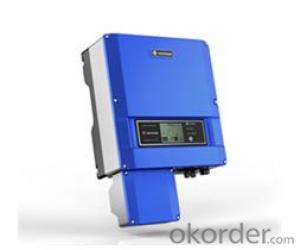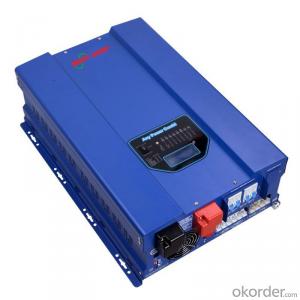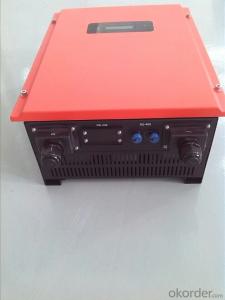Sunteams 1500 On Grid Solar Inverter with WiFi US Standard - India
- Loading Port:
- Shanghai
- Payment Terms:
- TT OR LC
- Min Order Qty:
- -
- Supply Capability:
- 10000 set/month
OKorder Service Pledge
Quality Product, Order Online Tracking, Timely Delivery
OKorder Financial Service
Credit Rating, Credit Services, Credit Purchasing
You Might Also Like
Sunteams 1500,2000,2500,3000,3600,4000,4600,5000
Sunteams US 1500,2000,2500,3000,3600,4000,4600,5000
1MPPT, single phase
IP 65
50Hz & 60 Hz
with Plug in wifi/ wifi box
with wire box/ without wire box
UL certified
■ For countries with UL certification (UL 1741 / IEEE 1547)
■ For countries with UL certification (UL 1741 / IEEE 1547)
Efficient
■ The CEC efficiency of the inverter can reach 95.0 %-97.5 %
■ Transformerless desi
■ The CEC efficiency of the inverter can reach 95.0 %-97.5 %
■ Transformerless desi
Simple
■ ‘Plug and play’connection for easy installation and maintenance
■ Designed for hanging with simple and easy installation
■ Fanless cooling concept
■ ‘Plug and play’connection for easy installation and maintenance
■ Designed for hanging with simple and easy installation
■ Fanless cooling concept
Communicative
■ RS232/RS485 interfaces as standard
■ Optional Bluetooth technology
■ RS232/RS485 interfaces as standard
■ Optional Bluetooth technology
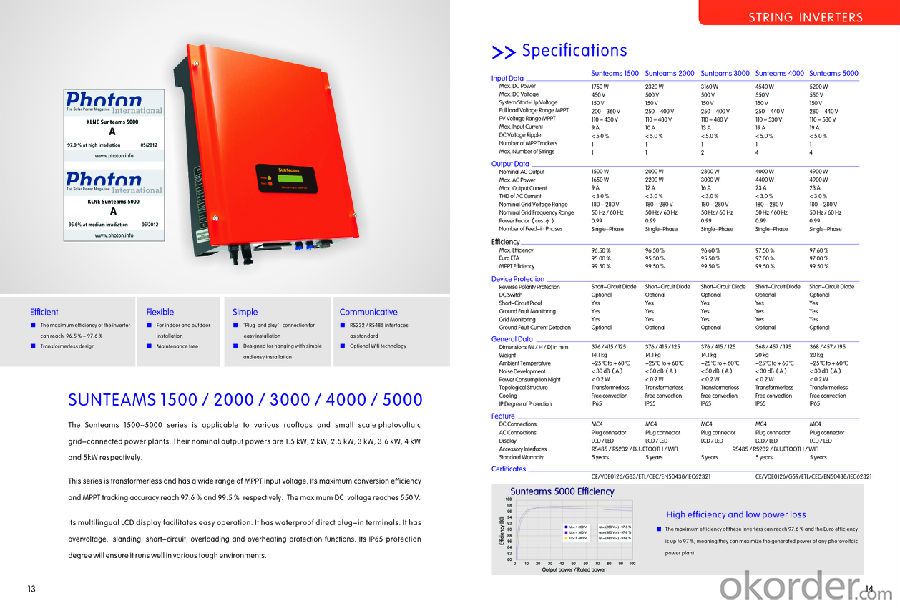
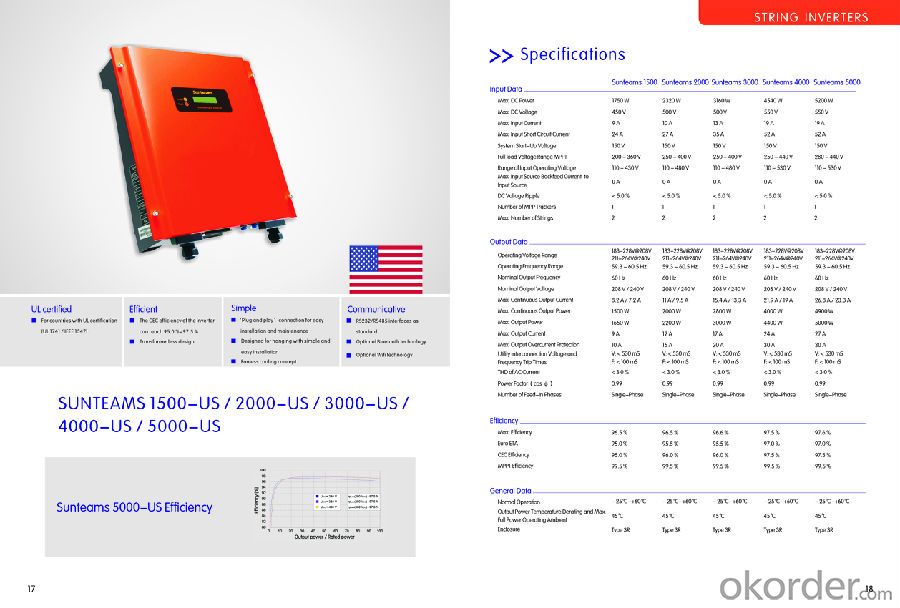
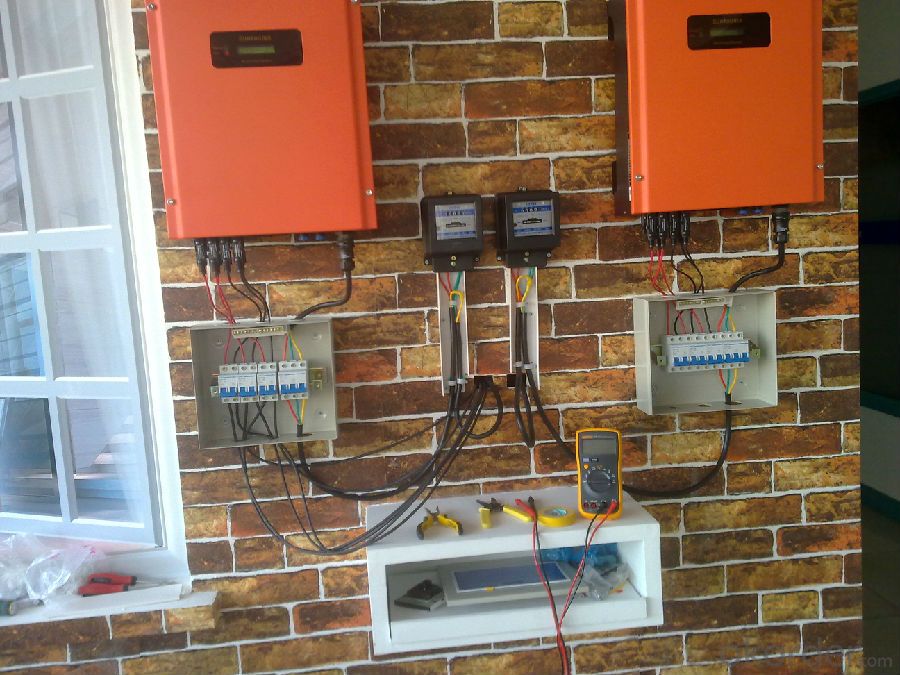
- Q: How does the input frequency range affect the performance of a solar inverter?
- The input frequency range directly affects the performance of a solar inverter. A wider input frequency range allows the inverter to efficiently convert a broader range of solar panel output frequencies into usable electricity. This flexibility ensures that the inverter can effectively handle varying solar panel output and maintain stable and reliable power conversion. Conversely, a limited input frequency range may result in poor performance, reduced efficiency, and potential instability or failure of the inverter under certain conditions.
- Q: Are there any safety concerns associated with solar inverters?
- Yes, there are some safety concerns associated with solar inverters. The main concern is the risk of electrical shock or fire due to faulty installation, improper maintenance, or inadequate grounding. It is important to ensure that professional installation is done according to safety guidelines and that regular inspections and maintenance are carried out to mitigate these risks.
- Q: How does a solar inverter handle voltage drop in long cable runs?
- A solar inverter compensates for voltage drop in long cable runs by using a technology called Maximum Power Point Tracking (MPPT). MPPT allows the inverter to continuously adjust the operating voltage and current to extract the maximum power from the solar panels. This ensures that even with voltage drop in long cable runs, the inverter optimizes the power output from the panels, ultimately minimizing the impact of the voltage drop.
- Q: How is the output voltage of a solar inverter regulated?
- The output voltage of a solar inverter is regulated through a combination of voltage control algorithms and power electronics components. These algorithms continuously monitor the voltage level and adjust the inverter's operation accordingly to maintain a stable output voltage. Additionally, power electronics components like DC-DC converters and inverters are used to convert the variable DC voltage generated by the solar panels into a stable AC voltage output that matches the grid requirements.
- Q: What is maximum power point tracking (MPPT) in a solar inverter?
- Maximum power point tracking (MPPT) is a technique used in solar inverters to optimize the power output of a photovoltaic (PV) system. Solar panels generate electricity when exposed to sunlight, and their power output varies depending on factors such as temperature, shading, and the angle of incidence of sunlight. The maximum power point (MPP) is the point at which a solar panel generates the maximum amount of power for a given set of environmental conditions. However, since these conditions are constantly changing, it is essential to continuously track the MPP to ensure the highest possible power output from the solar panels. A solar inverter with MPPT functionality utilizes advanced algorithms and electronics to continuously monitor the voltage and current output of the solar panels. By dynamically adjusting the operating voltage and current to match the MPP, the MPPT inverter ensures that the solar panels operate at their highest efficiency, regardless of the changing environmental conditions. When the solar panels are operating at their MPP, the MPPT inverter extracts the maximum amount of power from the panels and converts it into usable AC power. This optimization leads to higher overall energy generation and maximizes the return on investment for solar power systems. In addition to improving efficiency, MPPT also offers other advantages. It can compensate for fluctuations in solar irradiation, temperature, or shading that may affect the power output of the panels. By continuously tracking the MPP, the MPPT inverter adjusts the operating parameters to mitigate the impact of these factors, ensuring a consistent and optimal power output. Overall, MPPT is a crucial feature in solar inverters as it maximizes the power output of a PV system by continuously tracking and adjusting the operating parameters to match the MPP. This technology enables solar power systems to operate at their highest efficiency, enhance energy generation, and maximize the benefits of utilizing renewable energy sources.
- Q: Can a solar inverter be used with any type of solar panel?
- No, a solar inverter cannot be used with any type of solar panel. The compatibility between the solar inverter and solar panel depends on the type and specifications of both the inverter and the panel. It is important to ensure that the inverter is designed to work with the specific type and voltage of the solar panel to ensure optimal performance and efficiency.
- Q: How does a microinverter differ from a string inverter?
- A microinverter differs from a string inverter in that it is a small, individual inverter attached to each solar panel, converting the DC power generated by the panel into AC power. On the other hand, a string inverter is a larger central inverter that is connected to multiple solar panels in a string, converting the combined DC power into AC power. The main advantage of a microinverter is that it allows for maximum power point tracking and independent operation of each panel, increasing the overall efficiency and output of the solar system. Additionally, microinverters provide monitoring capabilities at the panel level, making it easier to identify and address any issues or malfunctions.
- Q: How do you calculate the maximum power point tracking range for a solar inverter?
- To calculate the maximum power point tracking (MPPT) range for a solar inverter, you need to consider various factors such as the solar panel's voltage and current characteristics, temperature, and the inverter's efficiency. Using the voltage-current (V-I) curve of the solar panel, the MPPT range can be determined by finding the point where the power output is maximized. This is typically done using algorithms within the solar inverter to continuously adjust the operating point to track the maximum power available from the solar panel.
- Q: How does a solar inverter handle reactive power injection into the grid?
- A solar inverter handles reactive power injection into the grid by utilizing power factor correction techniques. It actively monitors the grid's voltage and adjusts the reactive power output to maintain a desired power factor. This ensures efficient energy transfer and minimizes any negative impacts on the grid's stability and power quality.
- Q: Can a solar inverter be used with a solar-powered remote sensing system?
- Yes, a solar inverter can be used with a solar-powered remote sensing system. The solar inverter is responsible for converting the direct current (DC) generated by the solar panels into alternating current (AC) that can be used to power the remote sensing system.
Send your message to us
Sunteams 1500 On Grid Solar Inverter with WiFi US Standard - India
- Loading Port:
- Shanghai
- Payment Terms:
- TT OR LC
- Min Order Qty:
- -
- Supply Capability:
- 10000 set/month
OKorder Service Pledge
Quality Product, Order Online Tracking, Timely Delivery
OKorder Financial Service
Credit Rating, Credit Services, Credit Purchasing
Similar products
Hot products
Hot Searches
Related keywords
